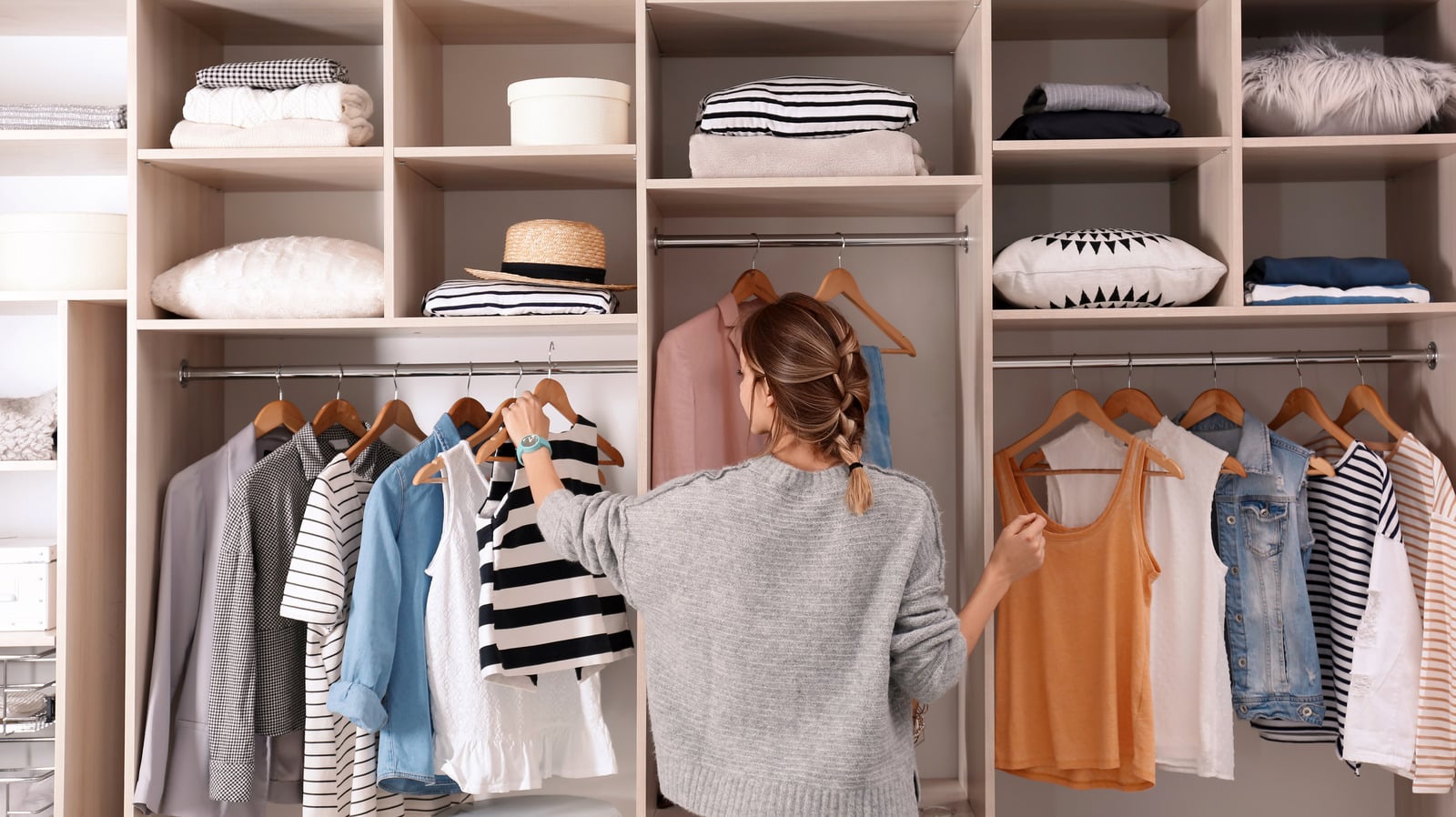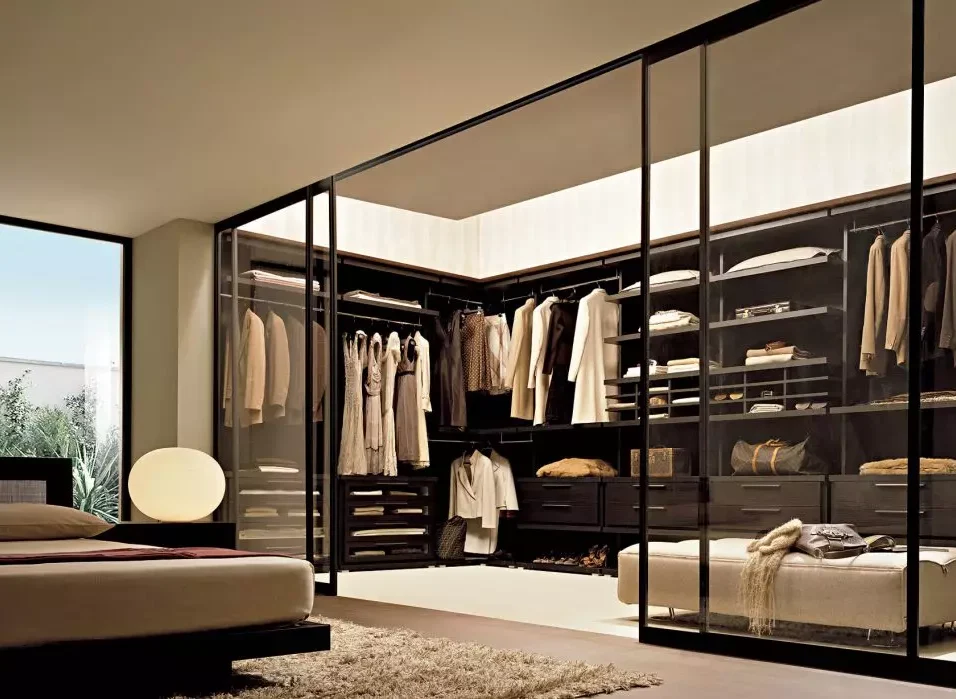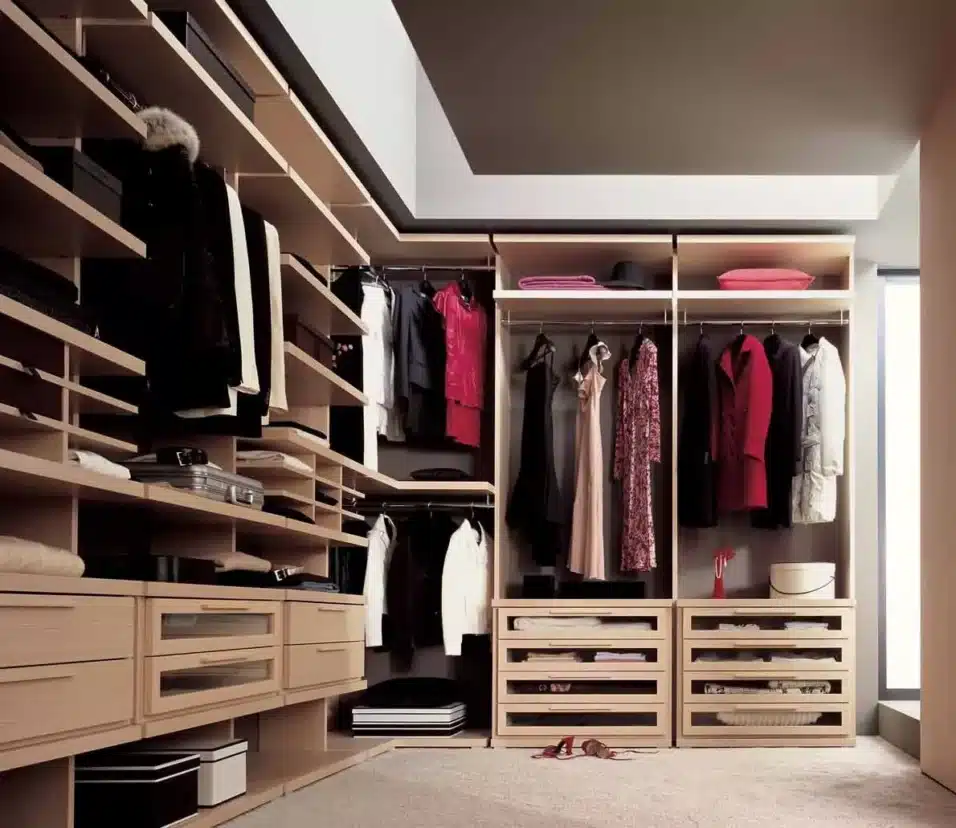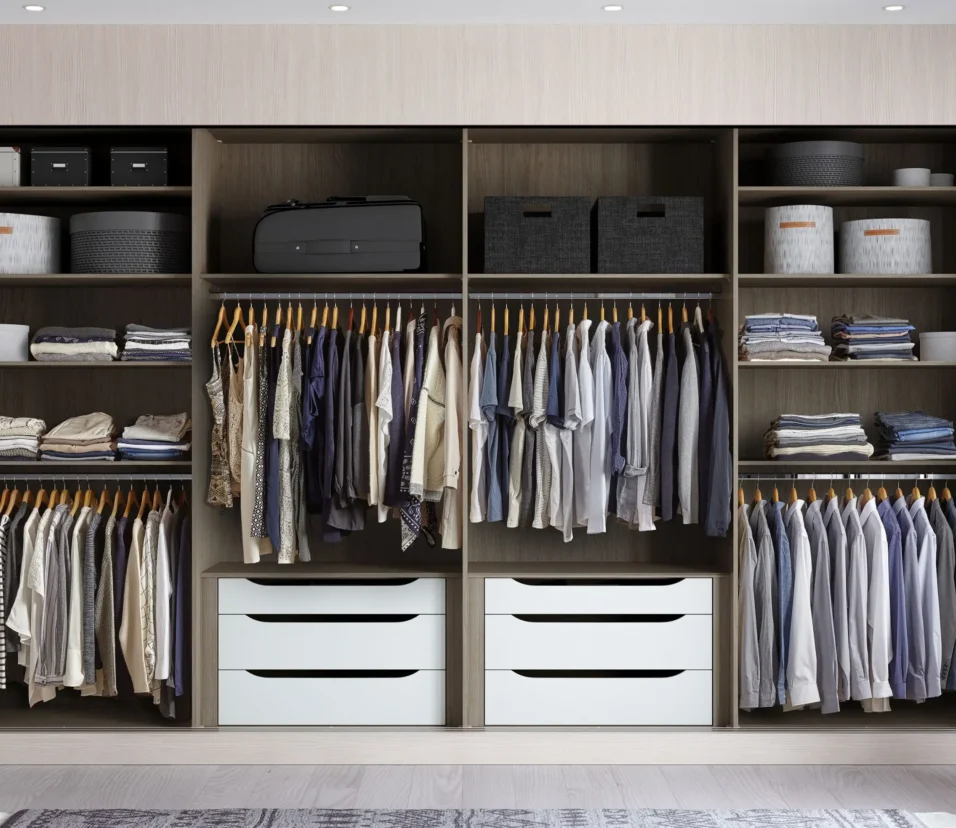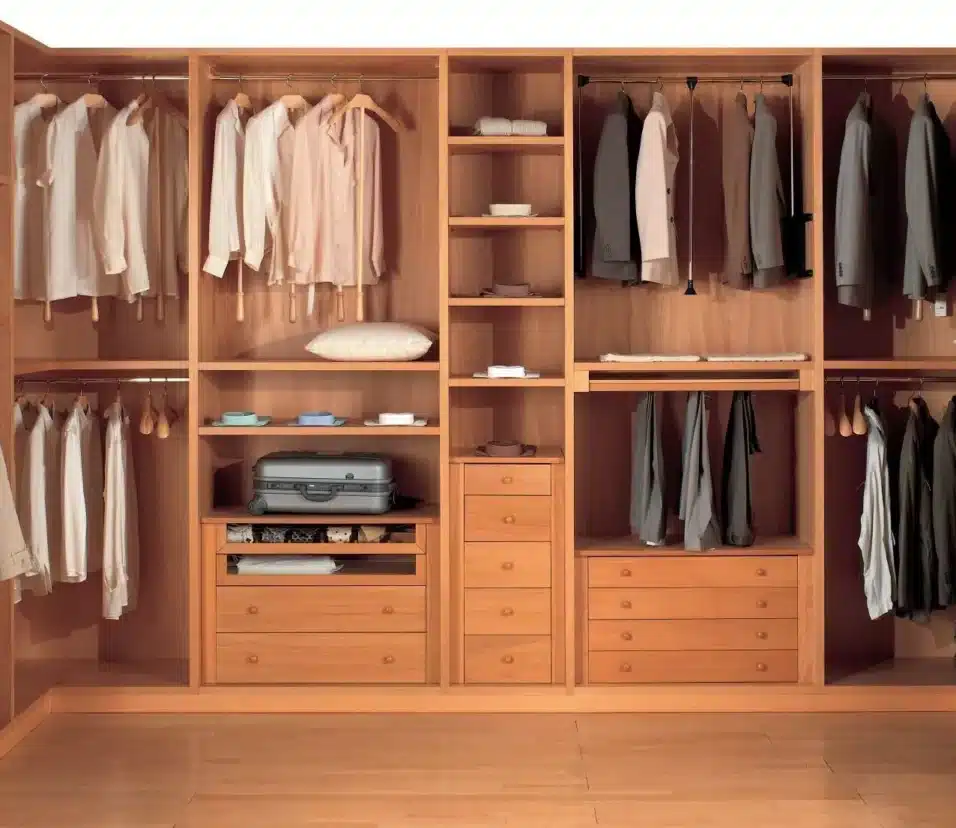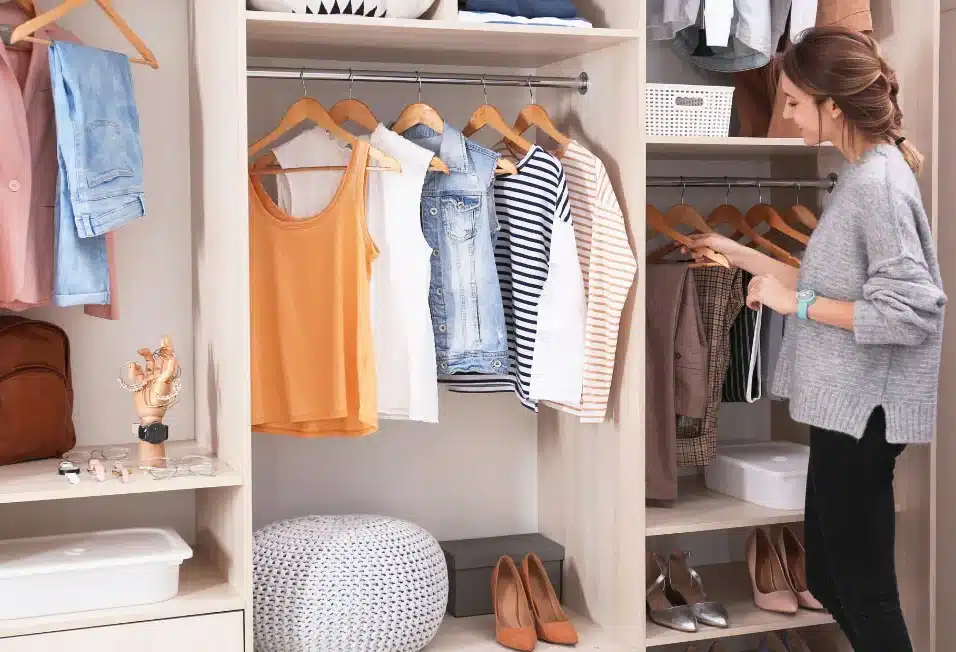How To Use A Wardrobe Box
Introduction
How To Use A Wardrobe Box: When it comes to moving or storing your clothes, a wardrobe box can be a lifesaver. These specially designed boxes are perfect for keeping your garments organized, protected, and wrinkle-free during transportation or while in storage. Whether you are moving to a new home or simply need to store your seasonal clothing, knowing how to use a wardrobe box effectively can make the process much easier and more efficient.
Benefits of Using a Wardrobe Box: Using a wardrobe box offers several advantages over traditional moving boxes or garment bags. Firstly, wardrobe boxes are specifically designed to accommodate hanging clothes, allowing you to keep your garments on hangers and avoid folding or creasing them. This is especially important for delicate or formal clothing items that can easily become damaged or wrinkled.
Another benefit of using a wardrobe box is the convenience it offers. With a built-in metal bar, you can easily transfer your clothes from your closet directly into the wardrobe box, eliminating the need to remove them from hangers and fold them. This not only saves time but also reduces the risk of losing or misplacing items during the moving or storage process. Furthermore, wardrobe boxes often come with a sturdy handle, making them easy to carry and transport.
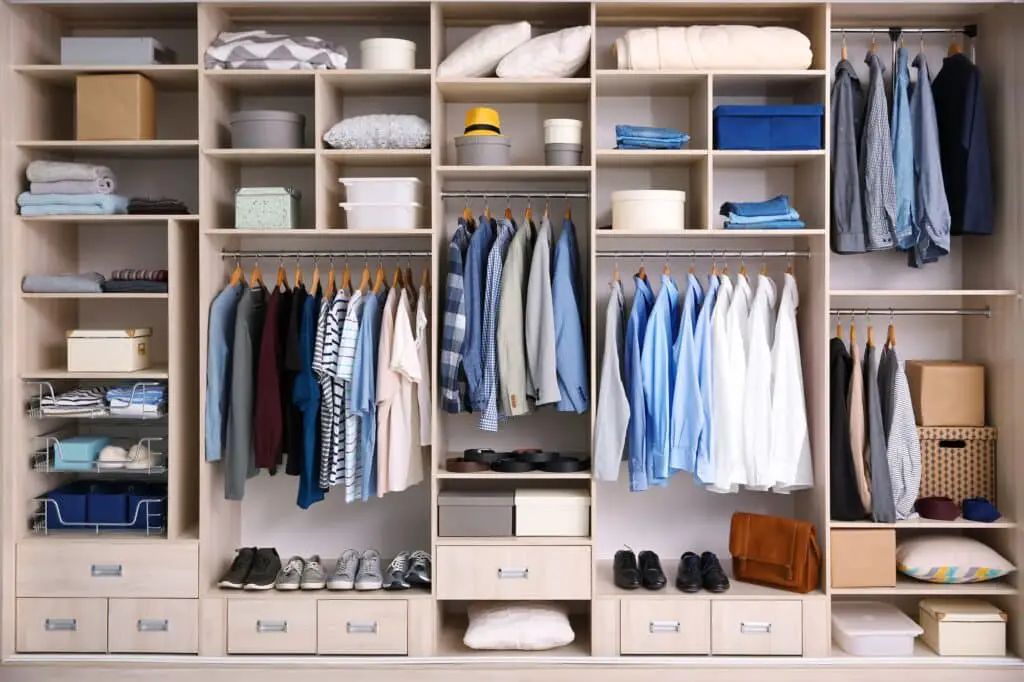
Why use wardrobe boxes?
Like their name suggests, wardrobe boxes make it easy to pack up your hanging wardrobe quickly. It also is a good way to pack clothing that might otherwise be unfoldable, such as wedding gowns, evening wear, costumes and bulky outerwear.
Wardrobe boxes are an essential tool when it comes to moving or storing clothing items. These specialized crates make transporting or storing garments easy and wrinkle-free. Wardrobe boxes offer many benefits that make them a sensible purchase for moving or storing seasonal items.
Benefits of Using Wardrobe Boxes for Clothing Storage and Moving
Firstly, wardrobe boxes are specifically designed to accommodate hanging clothes. A metal bar lets you hang clothes as in a closet. This feature avoids the need to fold or put garments in bags or cartons, which might cause wrinkles. Wardrobe boxes keep things hanging, ready to wear when you unpack.
Secondly, wardrobe boxes are spacious and can hold a large number of clothing items. They are typically taller and wider than regular boxes, allowing you to fit more clothes inside. This is particularly useful if you have a large wardrobe or if you are moving with your entire family.
Additionally, wardrobe boxes are made of sturdy and durable materials. They are designed to withstand the weight of hanging clothes without collapsing or tearing. This ensures that your clothes are protected during the moving or storage process.
Lastly, wardrobe boxes are easy to use. They typically come with a front access panel that allows you to easily load and unload your clothes. This eliminates the need to remove all the clothes from the box to access a specific item. The convenience of wardrobe boxes makes the packing and unpacking process much smoother and more efficient.
How many clothes does a wardrobe box hold?
You will need 1 wardrobe box for every 2 feet of clothes. So, get out your tape measure, head to your closet, and measure how many feet of clothes you have, then divide by two. Add in an extra wardrobe box if your closet clothes are jammed very tight together to provide some space in the box.
A wardrobe box is a specialized moving box that is designed to hold and transport clothing items. It is typically used during a move or when storing clothes for an extended period of time. The size and capacity of a wardrobe box can vary depending on the manufacturer, but on average, a wardrobe box can hold around 18-24 inches of hanging clothes.
Understanding Wardrobe Boxes: Ideal for Hanging Clothes During Moves
It is important to note that a wardrobe box is designed to hold hanging clothes, so it may not be suitable for folded or stacked clothing items. The box typically comes with a metal bar or hanger rod that allows clothes to be hung up inside the box, similar to a closet. This helps to keep the clothes organized and prevents them from getting wrinkled or damaged during the move.
When packing a wardrobe box, provide space at the top for items to hang without becoming squashed. This assist preserve the garments and makes unpacking and hanging them easier at the new place.
In summary, a wardrobe box can hold around 18-24 inches of hanging clothes, but the exact number of clothes will depend on the size and type of clothing items being stored. It is a convenient and efficient way to transport and store clothes during a move or for long-term storage.
Can you put shoes in the bottom of a wardrobe box?
Surprisingly, wardrobe boxes can be used for more than just clothes, too! You can add shoes at the bottom of the box, purses, sheets, towels, or blankets, too! Load the pillows, shoes, or other items that will lay on the bottom of the box.
Yes, you can put shoes in the bottom of a wardrobe box. Wardrobe boxes are designed specifically for storing and transporting clothing, including shoes. Tall bins with a metal bar on top let you hang clothing inside. The bottom of the wardrobe box can keep shoes and other non-hangable things.
Put shoes in the bottom of a clothing box to save room and organize them during a move. Putting them in the box’s bottom protects them from being crushed or damaged. If your shoes are delicate, pack them well to avoid scuffs and scratches.
Protective Packing: Safeguarding Shoes in Wardrobe Boxes
When packing shoes in the bottom of a wardrobe box, it’s a good idea to wrap each pair individually in tissue paper or bubble wrap to provide extra protection. This will help prevent any friction or rubbing between the shoes, which could cause damage. You can also stuff the toes of the shoes with tissue paper or socks to help them maintain their shape.
If you have a large shoe collection, you may need multiple wardrobe boxes to accommodate all of your shoes. It’s important to distribute the weight evenly among the boxes to prevent them from becoming too heavy and difficult to move. Additionally, labeling each box with its contents will make it easier to find specific pairs of shoes when unpacking.
Wardrobe boxes are a great option for storing and transporting shoes during a move. By placing them in the bottom of the box and packing them properly, you can ensure that your shoes arrive at your new home in good condition.
What do you put in the bottom of a wardrobe?
Space at the bottom of a wardrobe often gets forgotten about. Separate short and longer-hanging pieces so you can access floor space more easily, then invest in stacking boxes that can be arranged to fit. Clear boxes allow you to see what’s inside at a glance and are great for storing shoes or knitwear.
When it comes to organizing a wardrobe, the bottom space often gets neglected. However, it is just as important as the rest of the wardrobe and can be utilized effectively to maximize storage.
What should you put in the bottom of a wardrobe?
Shoe racks: A shoe rack is a popular and useful wardrobe bottom item. This neatly stores and organizes shoes, making them accessible and preventing floor clutter. Shoe racks come in many sizes and styles to accommodate your wardrobe and shoe collection.
Storage boxes: Another useful item for the bottom of a wardrobe is storage boxes. These can be used to store items that you don’t frequently use or seasonal clothing. By placing them in storage boxes, you can keep your wardrobe clutter-free and create more space for everyday essentials. Opt for clear or labeled boxes to easily identify the contents.
Hanging organizers: If you have limited floor space in your wardrobe, consider using hanging organizers. These can be hung from the rod inside the wardrobe and provide additional storage for items like accessories, scarves, or belts. Hanging organizers often have multiple compartments, making it easy to keep things organized and within reach.
Laundry hamper: To keep your wardrobe clean and organized, it’s a good idea to have a laundry hamper in the bottom of your wardrobe. This allows you to conveniently store dirty clothes until laundry day, preventing them from piling up on the floor or taking up space in other areas of your room. Look for a hamper that is durable and easy to clean.
Drawer units: If your wardrobe has built-in drawers or space for drawer units, they can be a great addition to the bottom section. Drawer units provide additional storage for folded clothes, undergarments, or accessories. They help keep your wardrobe tidy and make it easier to find what you need.
How many shirts should a minimalist have in a wardrobe?
A minimalist should own 5-6 casual tops, shirts, tees, as well as 2-4 workout tops or tanks. One top for each day of the week is a good rule of thumb to build a conscious wardrobe focused on simplicity.
A minimalist approach to wardrobe is all about owning and keeping only the essentials. It is about decluttering and simplifying your life by getting rid of unnecessary items. When it comes to shirts, a minimalist would typically have a limited number of shirts in their wardrobe. However, the exact number of shirts a minimalist should have can vary depending on individual preferences and needs.
One of the key principles of minimalism is to have a wardrobe that is versatile and functional. This means having shirts that can be easily mixed and matched with other clothing items to create different outfits. A minimalist would prioritize quality over quantity and invest in a few high-quality shirts that are durable and timeless in style.
Having a small number of shirts also helps in reducing decision fatigue and simplifying the process of getting dressed. With fewer options to choose from, a minimalist can save time and energy in the morning by quickly selecting a shirt that they know works well with their other clothing items.
Another factor to consider when determining the number of shirts a minimalist should have is the individual’s lifestyle and personal preferences. Someone who works in a professional setting may require more shirts compared to someone who has a more casual or relaxed lifestyle. It is important for a minimalist to assess their needs and choose the number of shirts accordingly.
Simplifying Wardrobe: A Minimalist Approach to Shirt Collection
Ultimately, the number of shirts a minimalist should have in their wardrobe is subjective and can vary from person to person. Some minimalists may choose to have as few as five shirts, while others may have a slightly larger collection of around ten shirts. The key is to strike a balance between having enough shirts to meet your needs and avoiding excessive clutter.
Using a wardrobe box properly involves a few key steps to ensure your clothing stays organized and protected during the moving process. First, assemble the wardrobe box by following the manufacturer’s instructions. Make sure all the flaps are securely closed and taped to prevent any damage or dust from entering the box.
Next, start by folding your clothes neatly and placing them on hangers. It’s important to use sturdy hangers that can support the weight of your clothing items. Hang the clothes in the wardrobe box, making sure to distribute the weight evenly to prevent any strain on the box.
Once all your clothes are hung, you can use the bottom of the wardrobe box to store shoes, accessories, or folded items. This helps maximize the storage space and keeps everything in one place. Finally, seal the wardrobe box with tape and label it clearly with the contents and destination to make unpacking easier.
Can you provide a detailed explanation of how to assemble and disassemble a wardrobe box?
Assembling and disassembling a wardrobe box is a relatively simple process that can be done in a few easy steps. To assemble the box, start by laying it flat on the ground with the open side facing up. Fold the flaps on the bottom of the box inward and secure them with tape. Next, fold the sides of the box up and secure them with tape as well. Finally, fold down the top flaps and secure them with tape to complete the assembly.
Disassembling the box is just as straightforward. Start by removing the tape from the top flaps and folding them up. Then, remove the tape from the sides of the box and fold them down. Finally, remove the tape from the bottom flaps and fold them inward. This will allow you to easily store the box until it is needed again.
Are there any specific tips or tricks for maximizing the storage space in a wardrobe box?
When it comes to maximizing the storage space in a wardrobe box, there are several tips and tricks that can help you make the most of the available space. One important tip is to utilize the vertical space within the box. Instead of simply hanging clothes on the provided bar, consider using hangers with cascading hooks or clips to hang multiple items on a single hanger. This will allow you to hang more clothes in the same amount of space.
Another trick is to make use of the bottom of the wardrobe box. Instead of leaving it empty, you can place shoes, accessories, or even folded clothes at the bottom. This will help to maximize the storage capacity of the box and ensure that no space goes to waste. Additionally, you can use the sides of the box to store smaller items such as belts, scarves, or hats. Utilizing every available space will help you make the most of the wardrobe box.
What types of clothing items are best suited for storage in a wardrobe box?
When it comes to using a wardrobe box for clothing storage, there are certain types of clothing items that are better suited for this purpose. The main advantage of a wardrobe box is that it allows you to hang your clothes, just like you would in a regular closet. This means that clothing items that are best suited for storage in a wardrobe box are those that are typically hung in a closet, such as dresses, suits, blouses, and jackets.
Delicate or special occasion clothing items are also ideal for storage in a wardrobe box. These are the types of clothing that you want to keep in the best possible condition, as they may be expensive or have sentimental value. By hanging them in a wardrobe box, you can help prevent them from getting wrinkled or damaged.
It’s important to note that bulky or heavy clothing items may not be the best choice for storage in a wardrobe box. These types of items can take up a lot of space and may be difficult to hang properly. Instead, it may be more practical to fold and store them in a regular storage box.
Are there any precautions or considerations to keep in mind when using a wardrobe box for long-term storage?
When using a wardrobe box for long-term storage, there are several precautions and considerations to keep in mind to ensure the safety and preservation of your clothing items. Firstly, it is important to choose a suitable storage location that is clean, dry, and free from extreme temperatures. This will help prevent any damage or deterioration to your clothes over time.
Additionally, it is recommended to properly clean and prepare your clothing items before placing them in the wardrobe box. This includes washing or dry cleaning them to remove any dirt, stains, or odors. It is also advisable to fold or roll your clothes neatly to minimize wrinkles and maximize space efficiency.
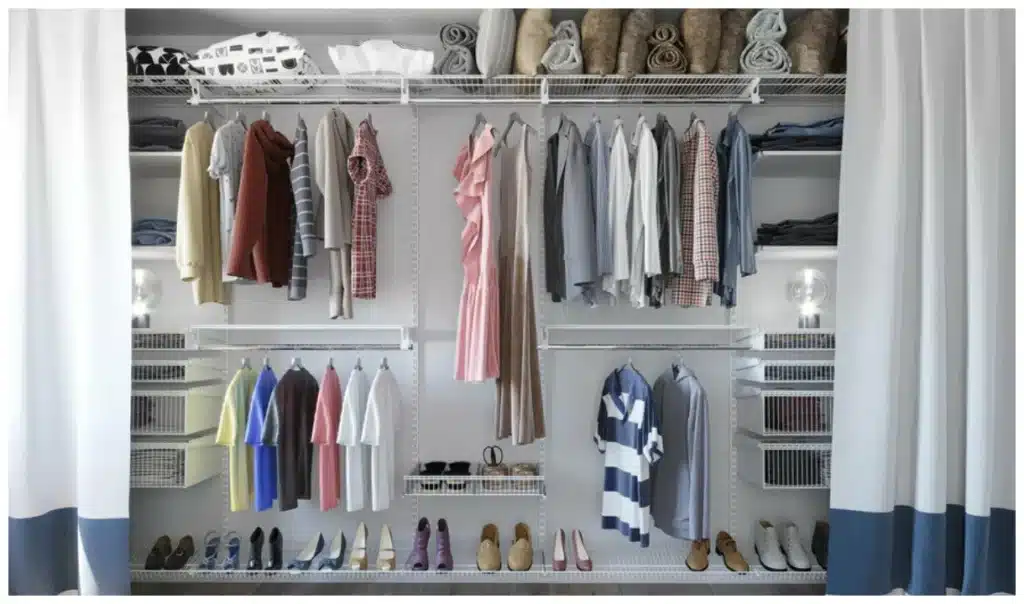
Conclusion
Knowing how to use a wardrobe box can greatly simplify the process of moving and storing clothing. These specialized boxes are designed to protect and organize your garments, making it easier to transport them without damage. By following a few simple steps, you can ensure that your clothes remain in excellent condition throughout the moving process.
Firstly, it is important to properly prepare your wardrobe box before packing your clothes. This includes assembling the box correctly and ensuring that it is sturdy enough to hold the weight of your garments. Additionally, you should line the bottom of the box with packing paper or bubble wrap to provide extra cushioning and protection.
Next, you should carefully fold and pack your clothes into the wardrobe box. Start by removing any hangers and folding your garments neatly. It is recommended to pack similar items together to make unpacking and organizing easier. You can also use packing paper or tissue paper to fill any gaps and prevent your clothes from shifting during transportation.
Finally, once your clothes are packed, it is important to seal the wardrobe box securely. This will prevent dust, dirt, and moisture from entering the box and potentially damaging your garments. You can use packing tape to seal the top and bottom of the box, ensuring that it is tightly closed.
Using a wardrobe box is a practical and efficient way to move and store your clothing. By following the proper steps of preparation, packing, and sealing, you can ensure that your clothes remain in excellent condition throughout the moving process. So, the next time you need to transport your wardrobe, don’t forget to utilize a wardrobe box for optimal protection and organization.



